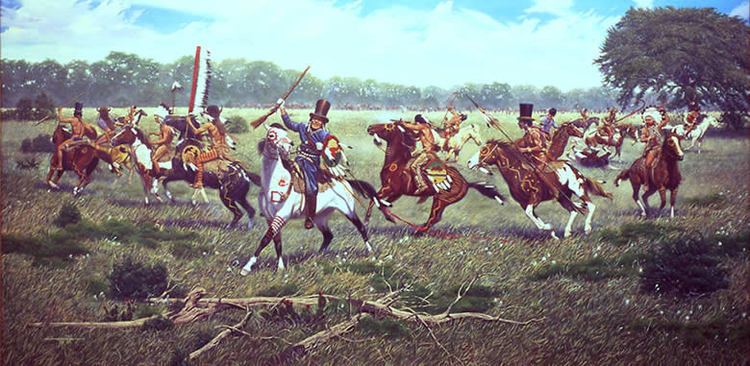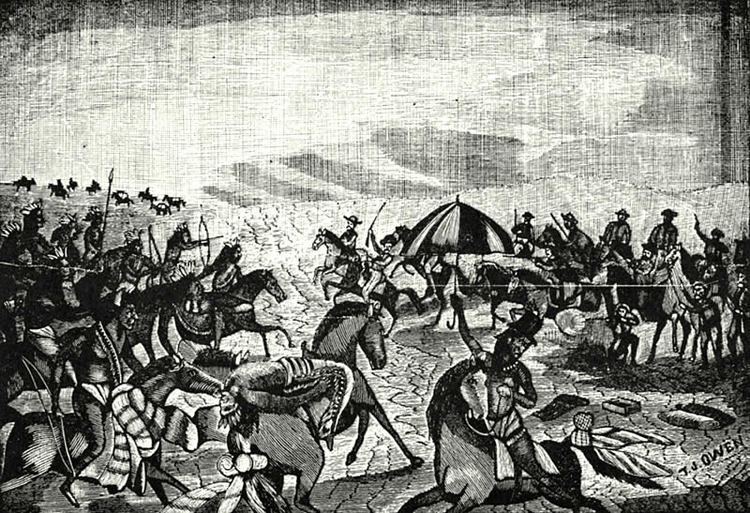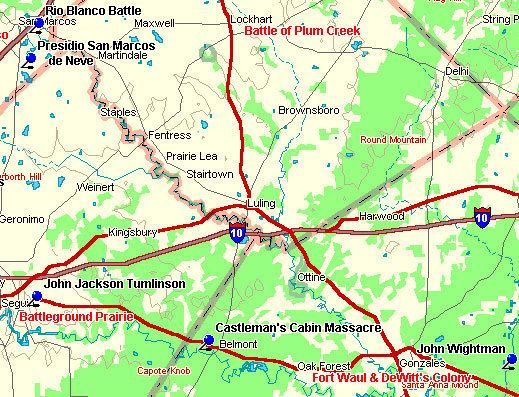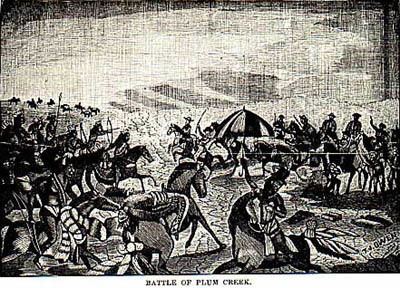Date 12 August 1840 | Result Texas Victory | |
 | ||
Approximately 200 Unknown, but the best guesses are 1000 in the war party, including women and children Similar Council House Fight, Great Raid of 1840, Battle of the Neches, Battle of Bandera Pass, Battle of Salado Creek | ||
Battle of plum creek kyle texas
The Battle of Plum Creek was a clash between allied Tonkawa, militia, and Rangers of the Republic of Texas and a huge Comanche war party under Chief Buffalo Hump, which took place near Lockhart, Texas, on August 12, 1840, following the Great Raid of 1840 as the Comanche war party returned to west Texas.
Contents
- Battle of plum creek kyle texas
- Battle of plum creek
- Background
- The Council House Fight
- The Great Raid of 1840
- The Battle of Plum Creek
- Aftermath
- References

Battle of plum creek
Background

Following the Council House Fight of 1840 a group of Comanches led by the Penateka Comanche War Chief Buffalo Hump, warriors from his own band plus allies from various other Comanche bands, raided from West Texas all the way to the coast and the sea. These Comanches were angered by the events of the Council House, in which Texans had killed the Comanche Chiefs when the Texans had raised a white flag of truce.
The Council House Fight

The Texan officials began the treaty talks with demands that were unacceptable or impossible to fulfill for the Comanches, such as the Comanche return all white captives, including the famous captive Cynthia Parker. Other white captives were with bands of the Comanche not represented at the talks. As a show of good faith the Comanche chiefs brought in two captives, a Mexican boy and an adolescent girl named Matilda Lockhart. The Texans thought they were going against their word, because the Comanche chiefs did not return all of the white captives and figured they held back some of their white captives to guarantee their own safety. Exercising a premeditated plan of violating the immunity of the peace delegation, the Texas militiamen told the chiefs it was they that would indeed be held hostage to guarantee the release of their other white captives. Everyone panicked and drew their weapons. The militia began firing and the entire Comanche peace delegation was killed.
The Great Raid of 1840

But Buffalo Hump was determined to do more than merely complain about what the Comanches viewed as a bitter betrayal. Spreading word to the other bands of Comanches that he was raiding the white settlements in revenge, Buffalo Hump led the Great Raid of 1840. On this raid the Comanches went all the way from beyond the Edwards Plateau in West Texas to the cities of Victoria and Linnville on the Texas coast. In what may have been the largest organized raid by the Comanches to that point on Texas settlements, or an attack by Indians on any white city in the continental United States, they raided and burned these towns, plundering at will. Linnville was the second largest port in Texas at that time. On the way back from the sea the Comanches were confronted by Texas rangers and militia in a fight called the Battle of Plum Creek (near the modern town of Lockhart).
The Battle of Plum Creek

The "battle" was really more of a running gun fight, as the Comanche War Party was trying to get back to the Llano Estacado with a huge herd of horses and mules they had captured, a large number of firearms, and other plunder such as mirrors, liquor, and cloth.[1] Volunteers from Gonzales under Mathew Caldwell and from Bastrop under Ed Burleson gathered to intercept the Comanches. Joined by Ranger companies and armed settlers hastily assembled as militia from central and east Texas, they confronted the Indians at Good's Crossing on Plum Creek, near the modern town of Lockhart (about 27 miles south of Austin). Texas history says the Texans won this battle, although the Indians got away with most of their plunder and a great many of the captured horses and mules. "Several hundred head of horses and mules were recaptured, as were also immense quantities of dry goods."[2] The Texans reported killing 80 Comanches (unusually heavy casualties for the Indians) in the fight, yet recovered only 12 Indian bodies. This was primarily due to the Comanche's tradition of gathering warrior corpses and burning them for burial. [3]

Apparently greed largely determined the battle's outcome. The Comanches would have never been caught had they not been herding such an enormous number of captured and heavily laden mules and horses. Thomas J. Pilgrim took part in the Battle of Plum Creek.
Aftermath
Buffalo Hump continued to raid white settlements until 1856, when he led his band into the Brazos River Reservation. The town of Linnville never recovered from the Great Raid, most of its residents moving to Port Lavaca, the new settlement established on the bay three and one half miles southwest by displaced Linnville residents.
